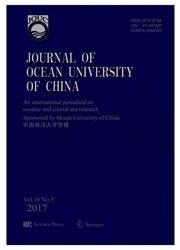

 中文摘要:
中文摘要:
Large areas of muddy sediments on the coastal shelves of China provide important samples for studying climate and ecological changes.Analysis of a large number of such samples,which is essential for systematic study on environmental information recorded in mud areas because of complicated sedimentary environment and variable sedimentary rate,requires a fast and economical method.In this study,we investigated the potential of X-ray fluorescence core scanner(XRFS),a fast analytical instrument for measuring the elemental concentrations of muddy sediments,and observed a significant correlation between the element concentrations of muddy sediments determined by regular X-ray fluorescence spectrometer(XRF)and XRFS,respectively.The correlations are mainly determined by excitation energy of elements,but also influenced by solubility of element ions.Furthermore,we found a striking link between Al concentrations and marine-originated organic carbon(MOC),a proxy of marine primary productivity.This indicates that MOC is partly controlled by sedimentary characteristics.Therefore,XRFS method has a good potential in fast analysis of a large number of muddy sediment samples,and it can also be used to calibrate MOC in ecological study of coastal seas.
 英文摘要:
英文摘要:
Large areas of muddy sediments on the coastal shelves of China provide important samples for studying climate and ecological changes. Analysis of a large number of such samples, which is essential for systematic study on environmental information recorded in mud areas because of complicated sedimentary environment and variable sedimentary rate, requires a fast and economical method. In this study, we investigated the potential of X-ray fluorescence core scanner (XRFS), a fast analytical instrument for measuring the elemental concentrations of muddy sediments, and observed a significant correlation between the element concentrations of muddy sediments determined by regular X-ray fluorescence spectrometer (XRF) and XRFS, respectively. The correlations are mainly determined by excitation energy of elements, but also influenced by solubility of element ions. Furthermore, we found a striking link between A1 concentrations and marine-originated organic carbon (MOC), a proxy of marine primary productivity. This indicates that MOC is partly controlled by sedimentary characteristics. Therefore, XRFS method has a good potential in fast analysis of a large number of muddy sediment samples, and it can also be used to calibrate MOC in ecological study of coastal seas.
 同期刊论文项目
同期刊论文项目
 同项目期刊论文
同项目期刊论文
 Terrestrial and marine biomarker estimates of organic matter sources and distributions in surface se
Terrestrial and marine biomarker estimates of organic matter sources and distributions in surface se 期刊信息
期刊信息
